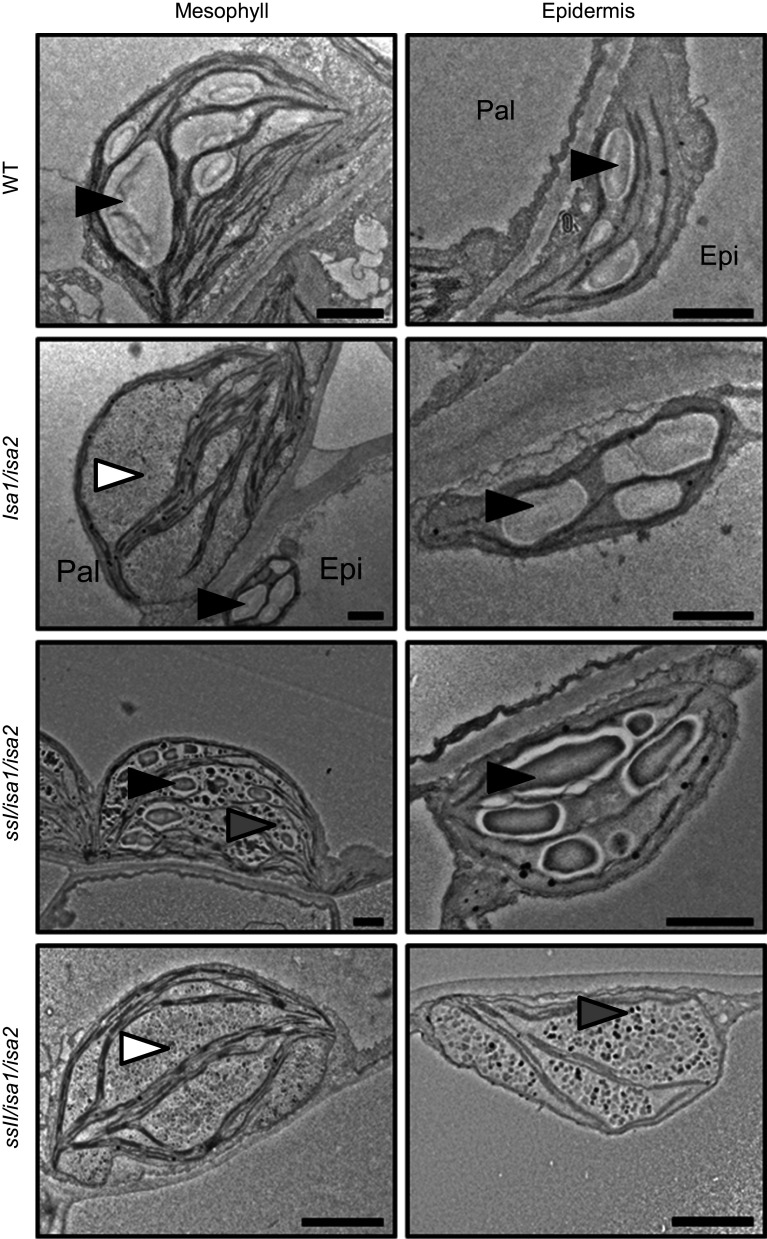Fig. 5.
Modulation of the isa mutant phenotype by starch synthases. Transmission electron micrographs of Arabidopsis chloroplasts at the end of day. Wild-type plants (WT) contain starch granules (black arrowheads) in the mesophyll and epidermis. The isa1/isa2 mutant accumulates predominantly phytoglycogen (white arrowheads) in the mesophyll, but still makes starch in the epidermal cells. Additional loss of SSI restores the formation of starch granules in the mesophyll, most likely due to a relative increase in the proportion of longer, cluster-filling chains that promote crystallization, despite aberrant branching. In contrast, additional loss of SSII completely abolishes the synthesis of insoluble glucans, even in the epidermal cells. This probably stems from the relative increase in shorter chains in the absence of SSII, impairing the formation of secondary and tertiary structures. Epi epidermal cell, Pal palisade cell, Bars 1 µm. Adapted from [122], Copyright American Society of Plant Biologists (http://www.plantphysiol.org)

